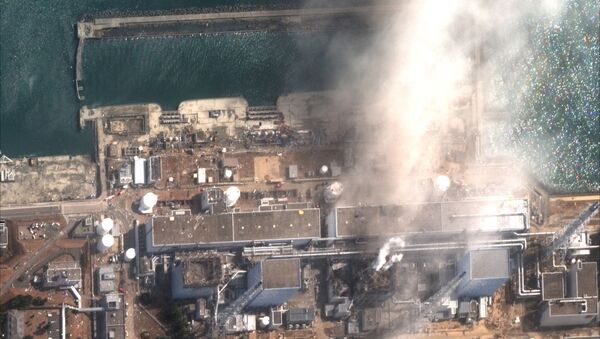The government has been contemplating ways to dispose of more than 1 million tons of water used to cool the disabled power plant. The plant is equipped with a pumping and filtration system that processes tons of contaminated water daily, leaving tritium in its composition - an element that is said to be dangerous to people only in very large doses - as well as small concentrations of other radioactive materials.
Tritium is "a naturally occurring radioactive form of hydrogen that is produced in the atmosphere when cosmic rays collide with air molecules,” the US Nuclear Regulatory Commission (NRC) explains.
According to the METI, releasing the treated radioactive water into the sea is safer than boiling it away. The disposal proposal will be submitted to the government in coming weeks, the Associated Press reported.
Local fishermen have strongly opposed releasing the water into the sea, which could negatively impact the Fukushima prefecture’s fishing industry.
“We should put Fukushima's recovery before anything else," said Takami Morita of Japan’s National Research Institute of Fisheries Science, AP reported. “Local fishermen and residents cannot accept a release of the water unless Fukushima's recovery makes more progress.”
However, the METI believes this method is the most effective because it is predictable and easy to monitor, noting that the plant’s operator, Tokyo Electric Power Company (TEPCO) Holdings Inc., already carried out this disposal process prior to the earthquake and tsunami that caused the plant’s meltdown in March 2011.
According to the ministry, dumping the treated radioactive material into the sea would release between 0.052 and 0.62 microsieverts annually. According to Britannica, a sievert is a unit of radiation absorption in the International System of Units (SI).
In comparison, 1.3 microsieverts would be released annually into the air if the radioactive water was evaporated. People in a normal living environment are exposed to 2,100 microsieverts of radiation daily, meaning the health risks of both methods are minimal, according to the METI.
The ministry has also noted that although TEPCO is planning to expand its tank capacity to 1.37 million tons by the end of 2020, that will still not be enough to store all of the water.
In 2011, the Fukushima No. 1 nuclear plant in Japan’s Ōkuma, Fukushima prefecture, was hit by a 46-foot tsunami triggered by a 9.0-magnitude offshore earthquake. The natural disaster crippled the facility's cooling system and resulted in the leakage of radioactive materials, hydrogen-air explosions and eventually the plant's shutdown.



